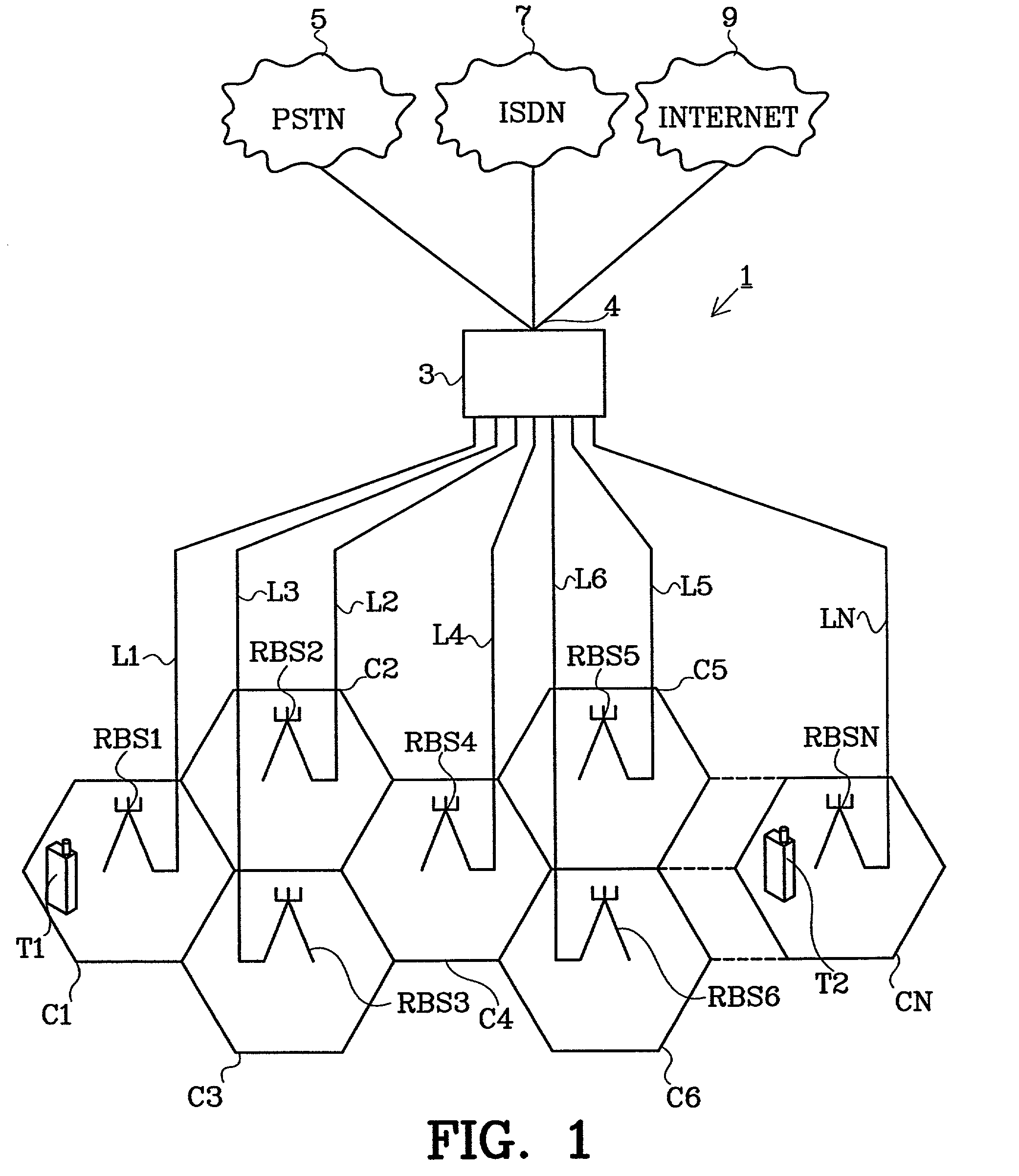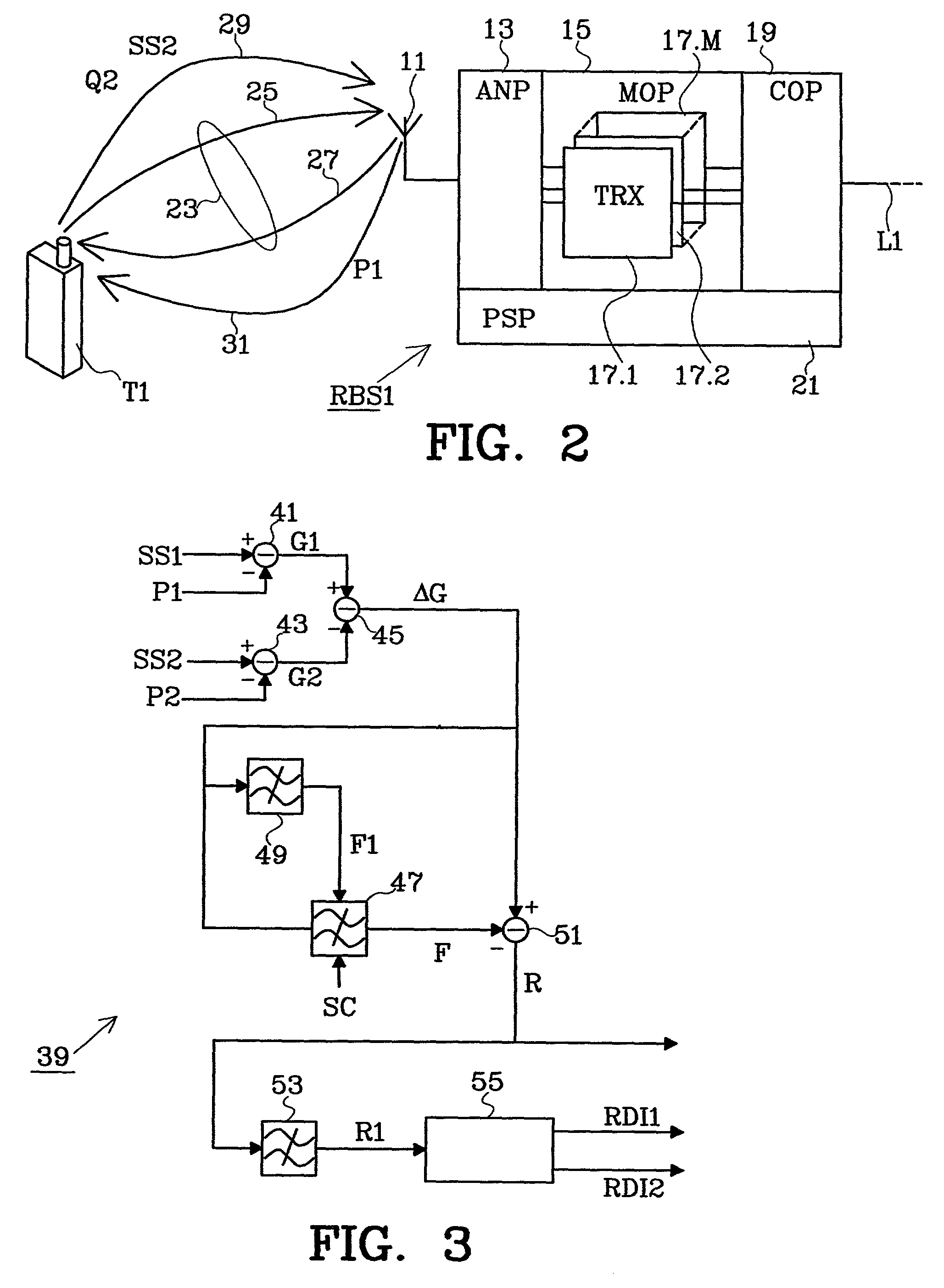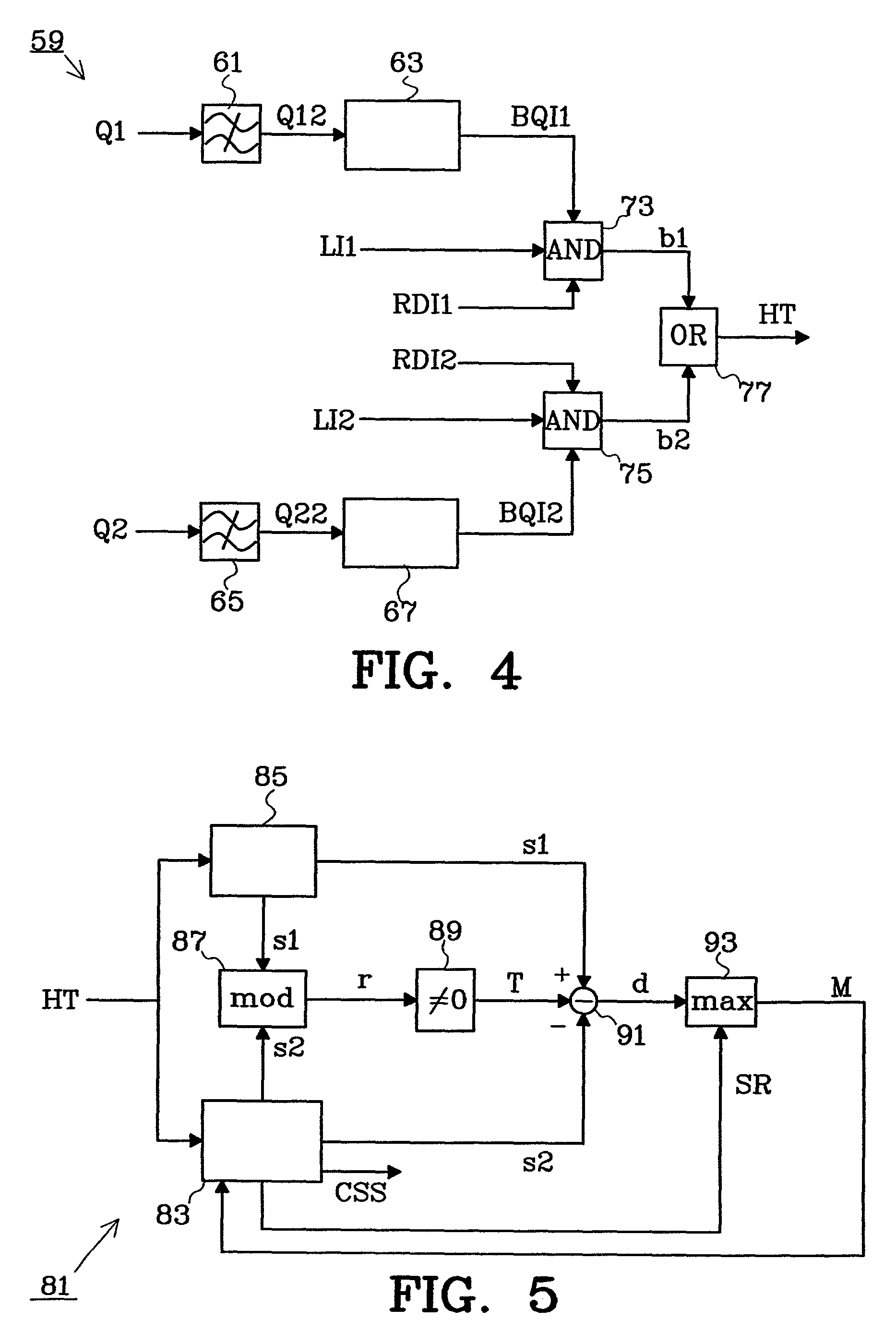Method and apparatus relating to radio communication
a radio communication and apparatus technology, applied in the field of radio communication, can solve the problems of communication loss, cdma methods are somewhat more complicated than fdma and tdma, and radio terminals are not allowed to use the first frequency band for uplink communication
- Summary
- Abstract
- Description
- Claims
- Application Information
AI Technical Summary
Benefits of technology
Problems solved by technology
Method used
Image
Examples
Embodiment Construction
[0026] FIG. 1 is a block diagram describing a PLMN 1 comprising a land system having a switching system 3 and a number (N) of radio base stations RBS1-RBSN. In this example the radio base stations RBS1-RBSN are arranged for providing radio communication services (e.g. speech communication or data communication) in corresponding cells C1-CN. The radio base stations RBS1-RBSN are connected to the switching system 3 by means of communication links L1-LN. In this example, the communication links L1-LN are landline connections. Alternatively, however, the communication links L1-LN are provided in some other form, e.g. in the form of radio links. The switching system includes a gateway node 4, which connects the PLMN 1 to other networks--in this example a PSTN 5, an ISDN 7 (Integrated Services Digital Network) and Internet 9. Radio terminals have subscriptions registered in the switching system 3. By way of example, a first radio terminal T1 is currently present in the cell C1 associated ...
PUM
 Login to View More
Login to View More Abstract
Description
Claims
Application Information
 Login to View More
Login to View More - R&D
- Intellectual Property
- Life Sciences
- Materials
- Tech Scout
- Unparalleled Data Quality
- Higher Quality Content
- 60% Fewer Hallucinations
Browse by: Latest US Patents, China's latest patents, Technical Efficacy Thesaurus, Application Domain, Technology Topic, Popular Technical Reports.
© 2025 PatSnap. All rights reserved.Legal|Privacy policy|Modern Slavery Act Transparency Statement|Sitemap|About US| Contact US: help@patsnap.com



